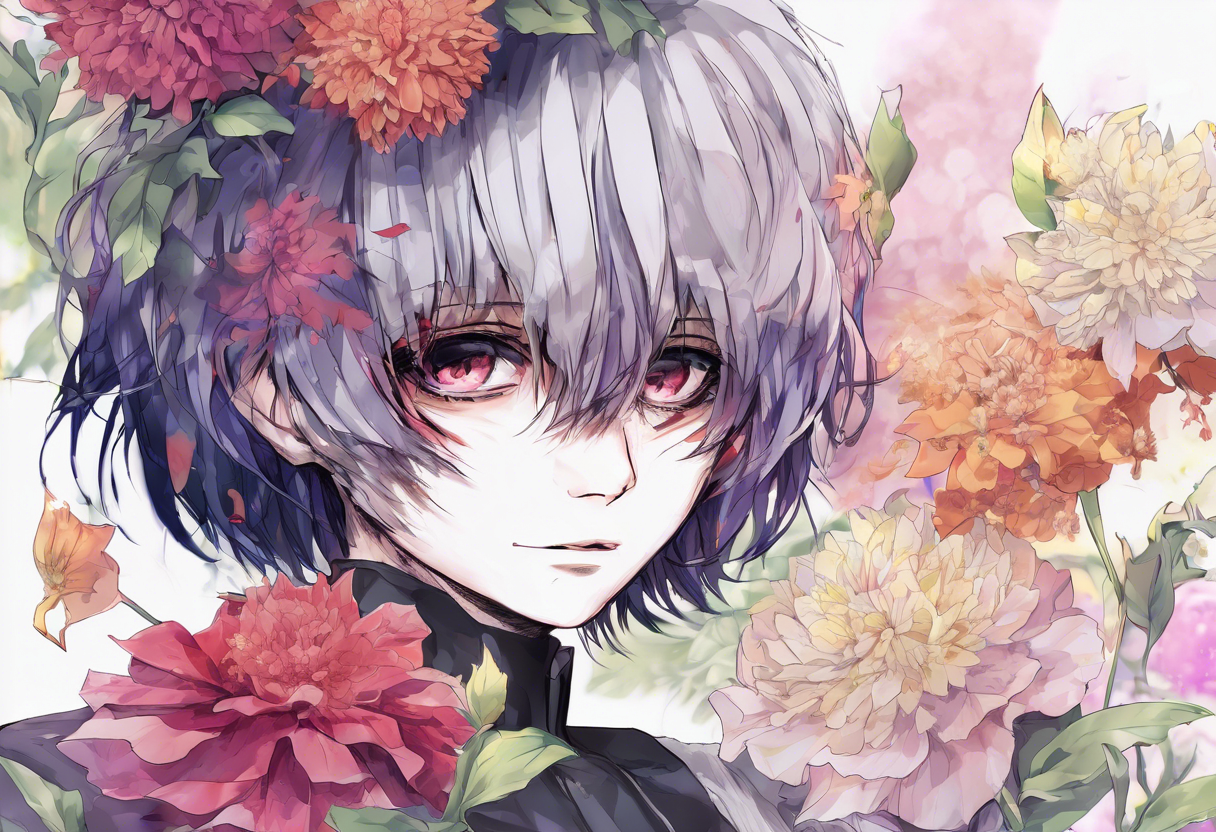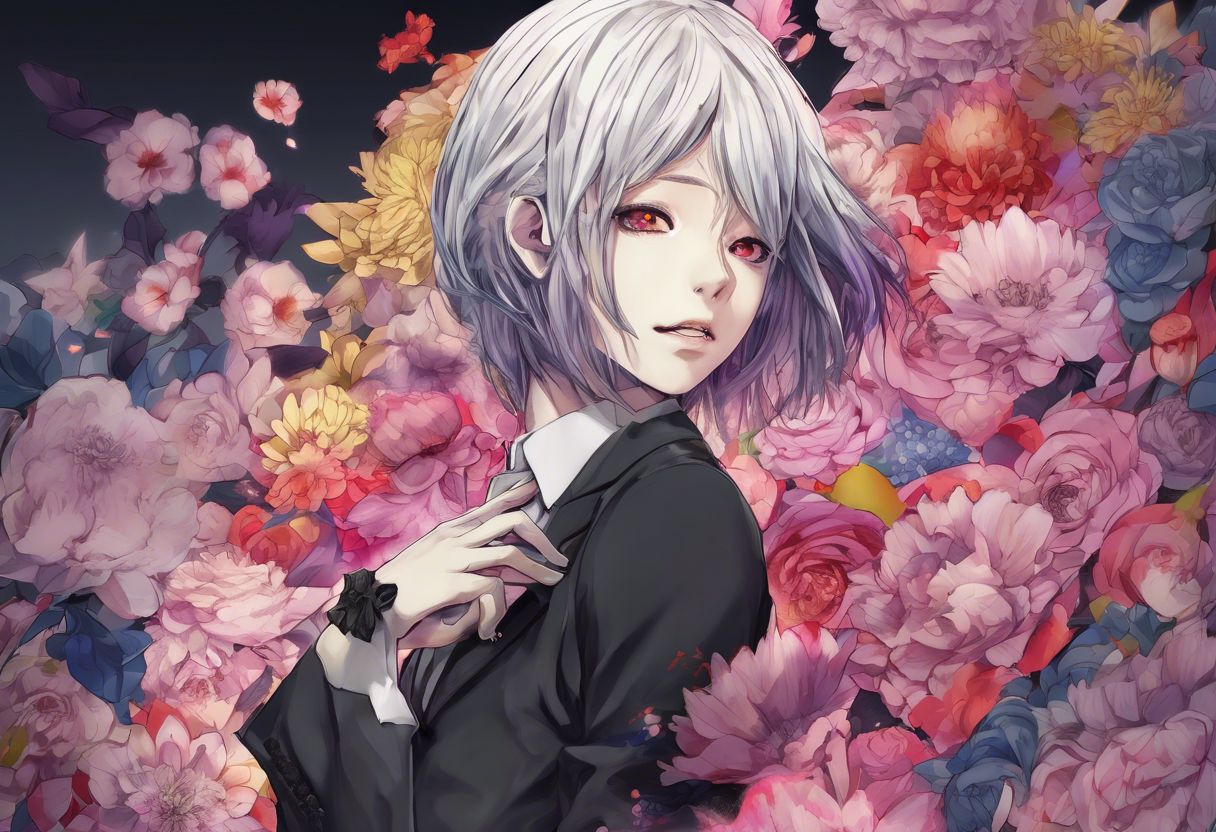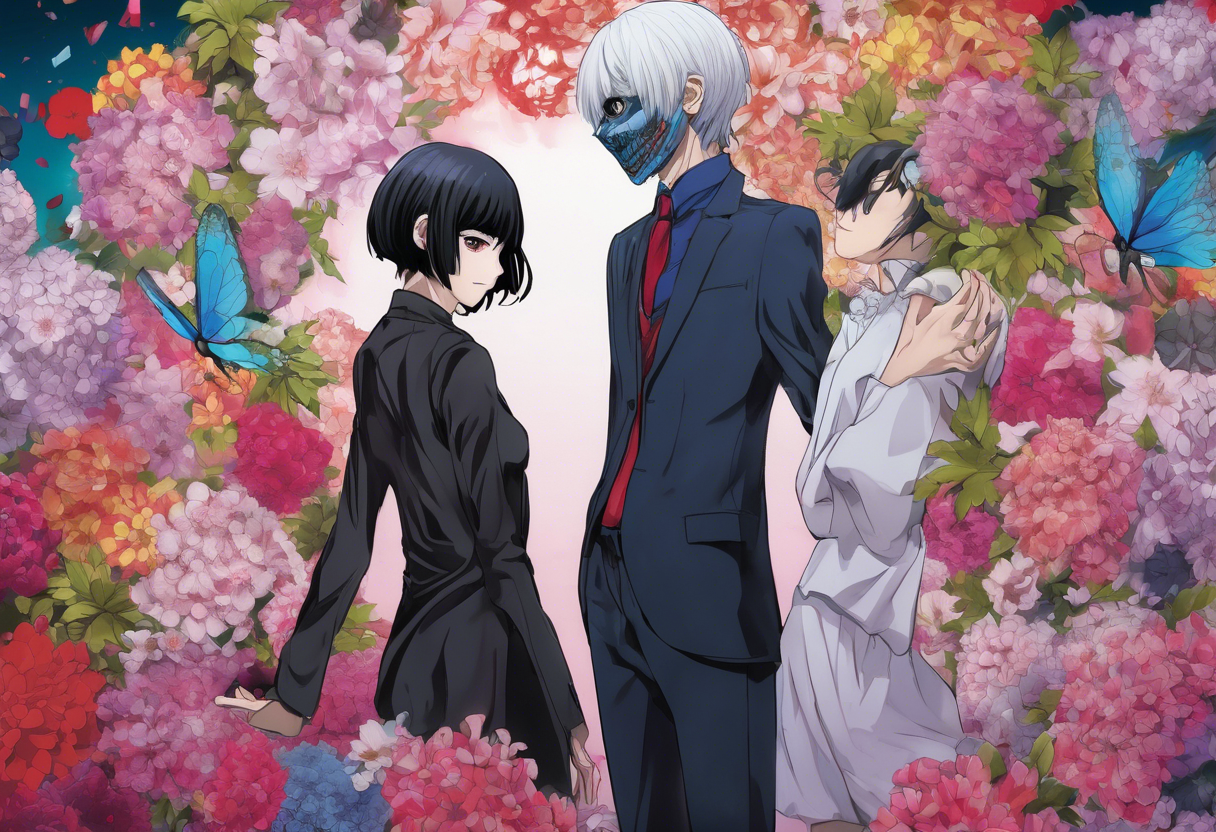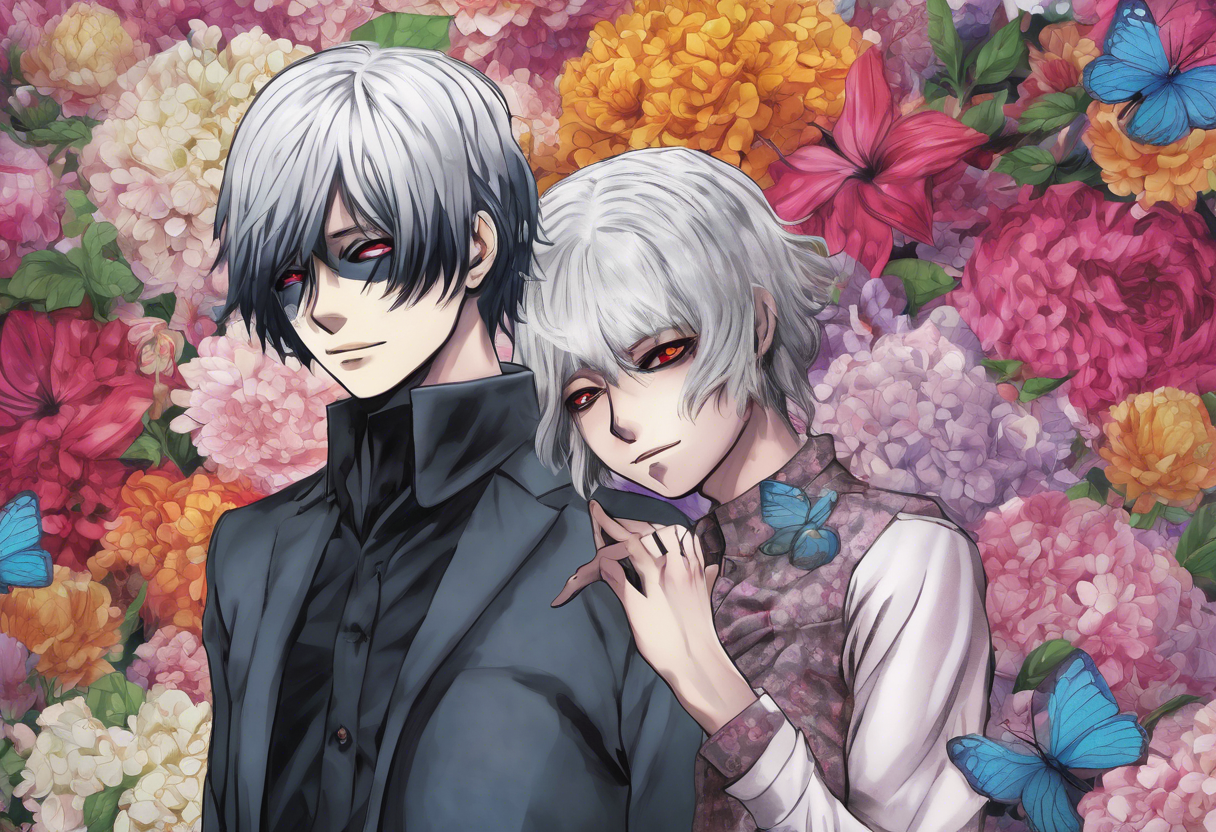Contents
Tokyo Ghoul √A – Episode 14: Dancing Flowers
Introduction
Tokyo Ghoul √A – Episode 14, titled "Dancing Flowers," is a pivotal installment in the second season of the anime series Tokyo Ghoul, adapted from Sui Ishida’s manga of the same name. The episode was directed by Shuhei Morita and written by Chūji Mikasano, as part of the larger narrative arc of Tokyo Ghoul √A, which premiered in January 2015. This season continues the story of Ken Kaneki, a half-human, half-ghoul, as he navigates the complex and dangerous world of ghouls and the Commission of Counter Ghoul (CCG) that seeks to eradicate them.
Produced by Pierrot, a renowned anime studio, Tokyo Ghoul √A – Episode 14 stands out within its genre for its deep character development, intricate plot, and the exploration of themes such as identity, morality, and the struggle between different societal groups. The episode’s release marked a significant point in the series, as it delves into the aftermath of key battles and the evolving relationships between characters.
Plot Summary
The episode "Dancing Flowers" begins with a flashback to the first battle between the CCG and the One-Eyed Owl, a powerful ghoul. This scene sets the stage for the current investigations and conflicts, highlighting the overwhelming strength of the One-Eyed Owl and the bravery of Kishou Arima, who rushed into battle against the enemy [3].
In the present, the high-ranking CCG investigators are holding a conference to discuss the situation regarding the Aogiri group and its connection to the "eye-patched" ghoul, a reference to Ken Kaneki. During this meeting, Yukinori Shinohara and Iwao Kuroiwa express their observations about the apparent changes in the One-Eyed Owl’s behavior from their first encounter to the most recent one. This discussion underscores the complexity and unpredictability of the ghouls they are dealing with.
Meanwhile, Akira Mado is formally introduced, adding another layer to the CCG’s dynamics and investigations. On the other side, Touka Kirishima is shown to be studying diligently for her college entrance exams, a distraction from the turmoil surrounding her. The staff of Anteiku, a ghoul cafe that serves as a sanctuary for ghouls, are busy preparing for the cafe’s reopening after it was closed due to the fight with Aogiri. This reopening is celebrated by several characters, including Uta, Itori, Yomo, Touka, Hinami, Nishio, Yoshimura, Koma, and Irimi, highlighting the resilience and community among the ghouls.
Kaneki, now aligned with Aogiri Tree, continues to work with Ayato Kirishima as his partner. This alliance is a significant development in Kaneki’s journey, as he navigates his identity as a half-ghoul and his role within the ghoul organization. The episode also features Eto, who is seen entering a room and undressing her bandages, revealing her lower face as she smiles and utters Kaneki’s name, hinting at her complex and mysterious character.
The narrative of "Dancing Flowers" is woven together by these multiple storylines, each contributing to the overall tension and character development. The episode delves into the personal struggles of the characters, such as Touka’s efforts to maintain a sense of normalcy through her studies, and Kaneki’s ongoing internal conflict about his place in the world.
As the episode progresses, it becomes clear that the characters are all navigating their own paths amidst the larger conflict between ghouls and humans. The CCG’s investigations and the Aogiri group’s actions are intertwined, setting the stage for future confrontations and revelations. The episode’s title, "Dancing Flowers," metaphorically captures the delicate and precarious balance between these different groups, each trying to survive and thrive in a world filled with danger and uncertainty.
The settings of the episode, ranging from the CCG headquarters to the reopened Anteiku cafe, serve as backdrops for the characters’ interactions and the unfolding plot. The narrative arcs of the characters are central to the episode, with each character facing their own set of challenges and making decisions that will impact the future of the story.
The central conflicts presented in the episode are multifaceted, involving both the external battles between ghouls and humans and the internal struggles of the characters. Kaneki’s journey, in particular, is a focal point, as he grapples with his identity and his place within the ghoul world. The episode also explores the themes of community and resilience, as seen in the celebration at Anteiku, and the theme of identity, as characters like Touka and Kaneki navigate their roles in society.
Themes and Symbolism
One of the central themes in "Dancing Flowers" is the struggle for identity and belonging. Kaneki’s character embodies this theme, as he navigates his dual nature as a half-human, half-ghoul. His alignment with Aogiri Tree and his interactions with other ghouls highlight the complexities of finding one’s place in a world where one does not fully belong to either side.
The episode also explores the theme of community and support. The reopening of Anteiku and the celebration by its staff and patrons underscore the importance of community and the need for a sense of belonging. This theme is particularly significant for the ghouls, who are often isolated and persecuted by society.
Symbolism plays a crucial role in the episode, particularly through the character of Eto. Her enigmatic presence and the revelation of her face serve as a symbol of the mysterious and often misunderstood nature of ghouls. The One-Eyed Owl, another symbolic figure, represents the power and fear that ghouls evoke in human society.
The title "Dancing Flowers" itself is symbolic, suggesting a delicate and precarious balance between different groups. It metaphorically captures the idea that even in the midst of conflict and danger, there is a beauty and fragility to the relationships and lives of the characters.
Cultural Impact
Upon its release, "Dancing Flowers" contributed to the ongoing popularity of the Tokyo Ghoul series. The episode’s complex characters and intricate plot resonated with audiences, who were drawn into the world of ghouls and humans. The series, including this episode, has had a significant influence on popular culture, inspiring fan art, cosplay, and discussions within anime communities.
The episode’s themes of identity, community, and the struggle between different societal groups have made it a subject of interest in broader cultural analyses. It has been referenced and adapted in various forms of media, reflecting its impact on the anime genre as a whole.
Critical Reception
"Dancing Flowers" received mixed reviews from critics and audiences. Some praised the episode for its character development and the advancement of the plot, while others found it confusing due to the non-linear storytelling and the lack of immediate resolution to previous conflicts [5].
Critics noted that the episode felt like a cleanup from the previous episodes, with some plot points feeling disconnected from the immediate narrative. However, the character of Kaneki and his development were widely praised, as his transformation and struggles continued to captivate audiences.
Despite some criticisms, the episode remained popular among fans of the series, who appreciated the deeper exploration of the characters and the world they inhabit.
Legacy
Tokyo Ghoul √A – Episode 14: "Dancing Flowers" continues to be an important part of the Tokyo Ghoul series, influencing both the anime genre and its fan base. The episode’s themes and character developments have set a standard for complex storytelling in anime, inspiring other creators to delve into similar narratives.
The enduring relevance of "Dancing Flowers" lies in its ability to engage audiences on multiple levels, from the personal struggles of the characters to the broader societal conflicts. It remains a pivotal episode in the series, contributing to the overall narrative arc and character development that defines Tokyo Ghoul.
References
- https://tokyoghoul.fandom.com/wiki/Episode_14
- https://www.imdb.com/title/tt4354560/plotsummary/
- https://otakubishounen.wordpress.com/2015/01/17/tokyo-ghoul-%E2%88%9Aa-ep-2-dancing-flowers-summary/
- https://en.wikipedia.org/wiki/Tokyo_Ghoul_%E2%88%9AA
- https://www.bubbleblabber.com/2015/02/review-tokyo-ghoul-%E2%88%9Aa-dancing-flowers/







